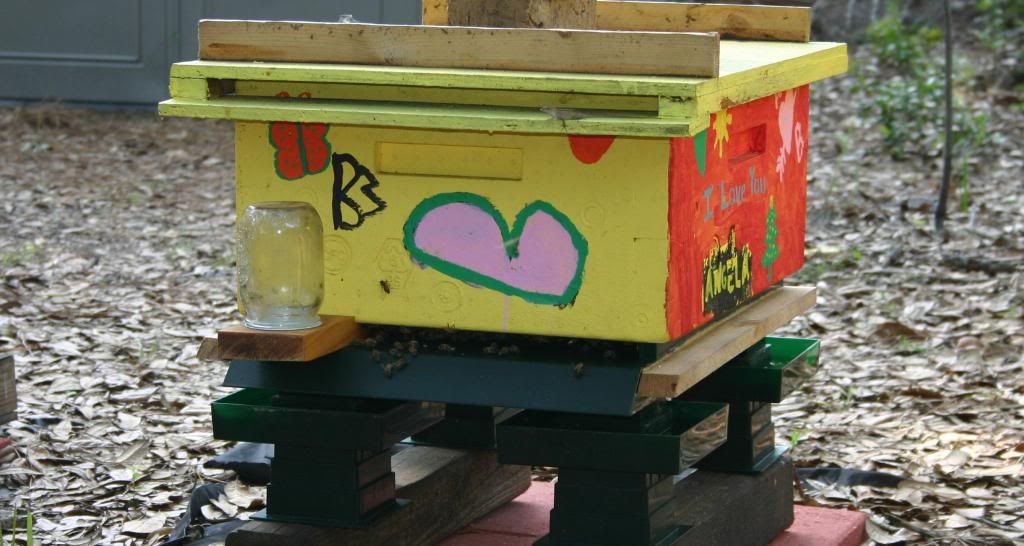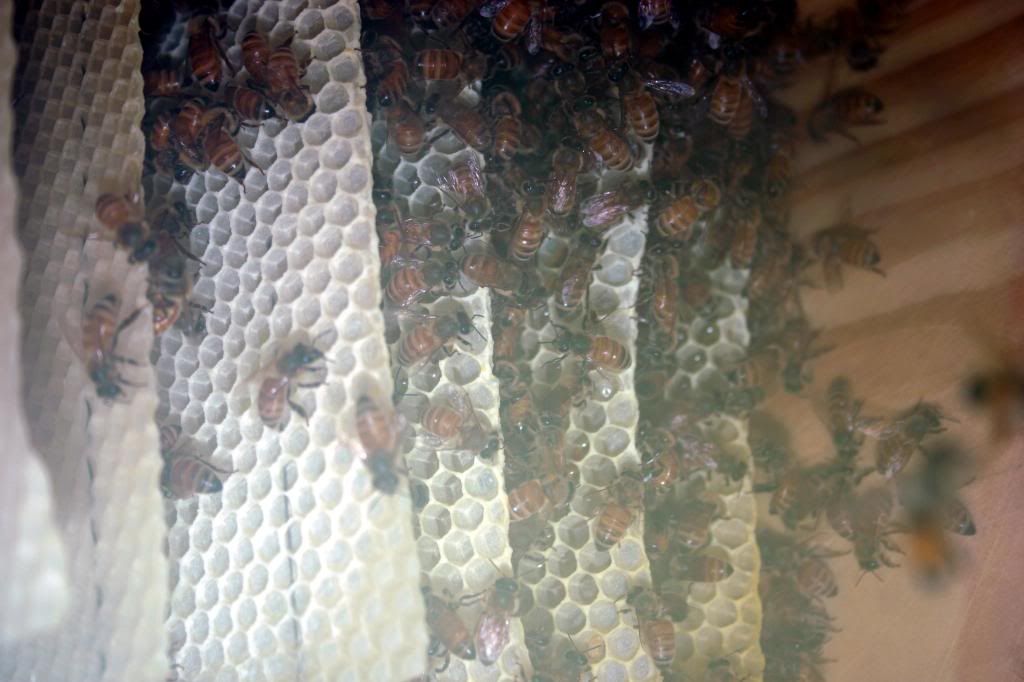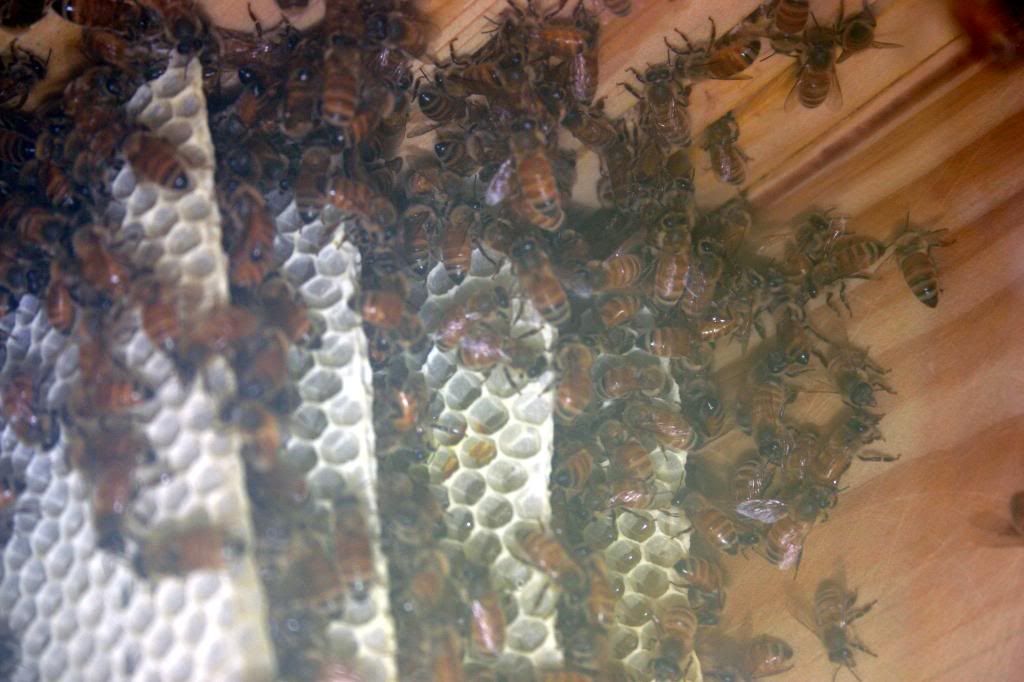The NUC looks very strong and active.
 The new hive has taken in about 32 ounces of sugar water in 3 weeks, and is beginning to look stronger. Obviously they have a long way to go, but they are off on the right path for now.
The new hive has taken in about 32 ounces of sugar water in 3 weeks, and is beginning to look stronger. Obviously they have a long way to go, but they are off on the right path for now. My original hive is once again looking good with its robust number of bees at the entrance.
My original hive is once again looking good with its robust number of bees at the entrance. The obvious U-turn in the apiary was taken by the TBH. It's my belief that there isn’t a single root cause to their problems but a complex combination of problems. Then again, since I’m the one in charge of the apiary it could be said the beekeeper is the sole root cause.
The obvious U-turn in the apiary was taken by the TBH. It's my belief that there isn’t a single root cause to their problems but a complex combination of problems. Then again, since I’m the one in charge of the apiary it could be said the beekeeper is the sole root cause. First – Invaders: during the week I noticed a few small hive beetle larva on the bottom of the TBH. A quick inspection revealed that the bees had completely moved out of NUC, therefore the NUC began to be over run by beetle larva. I quickly removed the remaining frames and the NUC, froze the frames for 24 hrs, and later attempted to let the bees clean the four frames. Four hives and none of the bees would have anything to do with the frames. My guess is that the honey had been completely fouled up by the SHB larva.
First – Invaders: during the week I noticed a few small hive beetle larva on the bottom of the TBH. A quick inspection revealed that the bees had completely moved out of NUC, therefore the NUC began to be over run by beetle larva. I quickly removed the remaining frames and the NUC, froze the frames for 24 hrs, and later attempted to let the bees clean the four frames. Four hives and none of the bees would have anything to do with the frames. My guess is that the honey had been completely fouled up by the SHB larva.
Second – Lack of ventilation: condensation in the inspection glass, and some honey running out are the obvious clues. I removed the inspection drawer which doubles as the bottom, and inserted some ¼ inch hardware cloth. I’ll make something more permanent later on. A non solid bottom should greatly improve the ventilation. Today’s high was 95 and it has been weeks since we had some significant rain. (Picture, bottom right is honey from the 1st couple of top bars) Third – The occupants: the NUC was a split from my original hive with an introduced Australian queen. The local bees are familiar with the Small hive Beetle and are aggressive against them. They are more likely acclimatized to the local hot and humid weather too. It seems that as soon as the local bees were replaced completely by the Australian bees, the invaders and the temperature problems began. Fortunately the Australians seem to be efficient, tolerant hard workers. With some help they seem to stay one step ahead of invaders, and don’t know any better to abscond for a different cooler place. In two weeks they have drawn out the 1st four top bars.
Third – The occupants: the NUC was a split from my original hive with an introduced Australian queen. The local bees are familiar with the Small hive Beetle and are aggressive against them. They are more likely acclimatized to the local hot and humid weather too. It seems that as soon as the local bees were replaced completely by the Australian bees, the invaders and the temperature problems began. Fortunately the Australians seem to be efficient, tolerant hard workers. With some help they seem to stay one step ahead of invaders, and don’t know any better to abscond for a different cooler place. In two weeks they have drawn out the 1st four top bars.

Thank God for partial shade, but I know other Florida beekeepers keep their hives in the full sun. HOW do the bees do it?


No comments:
Post a Comment